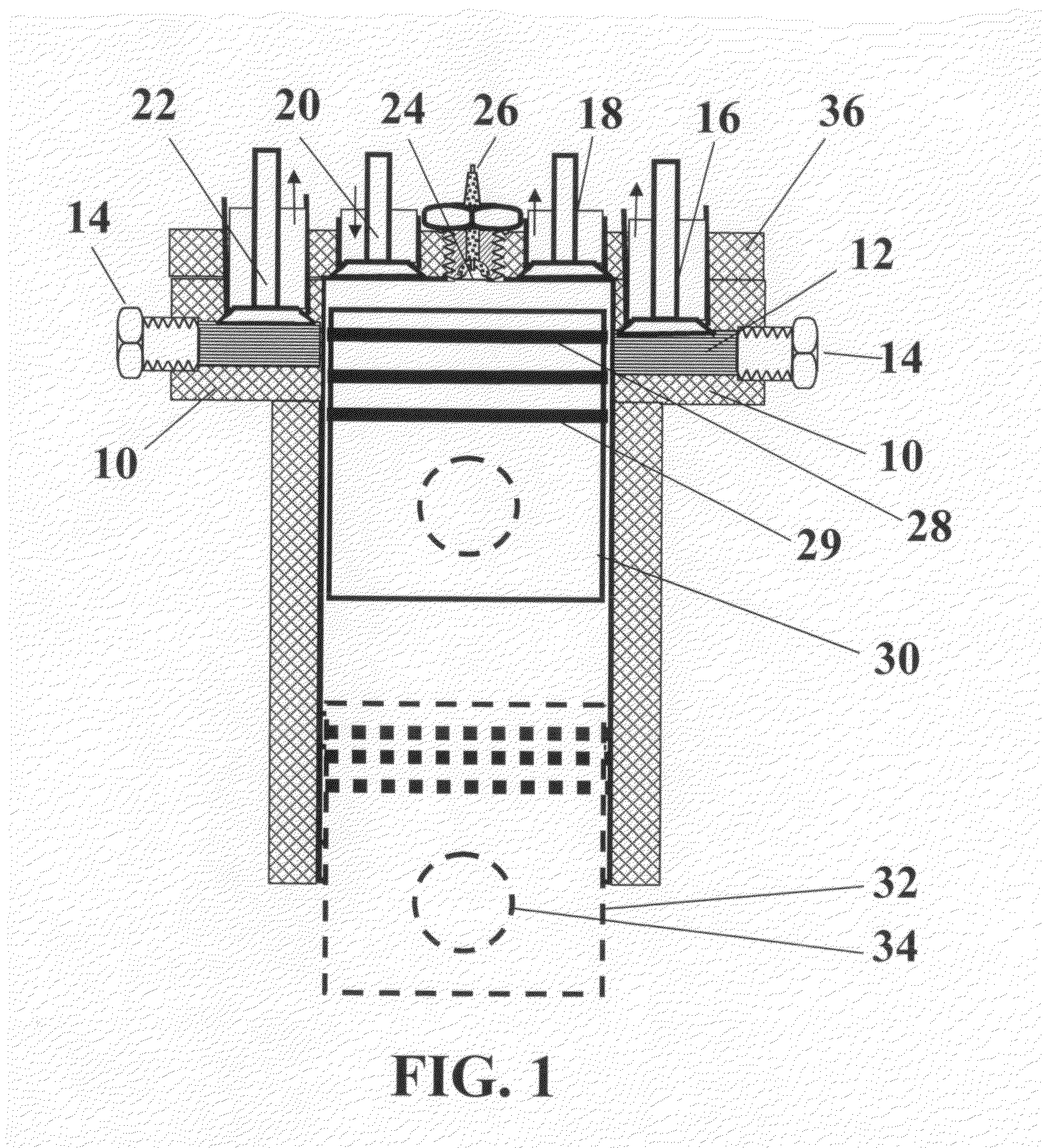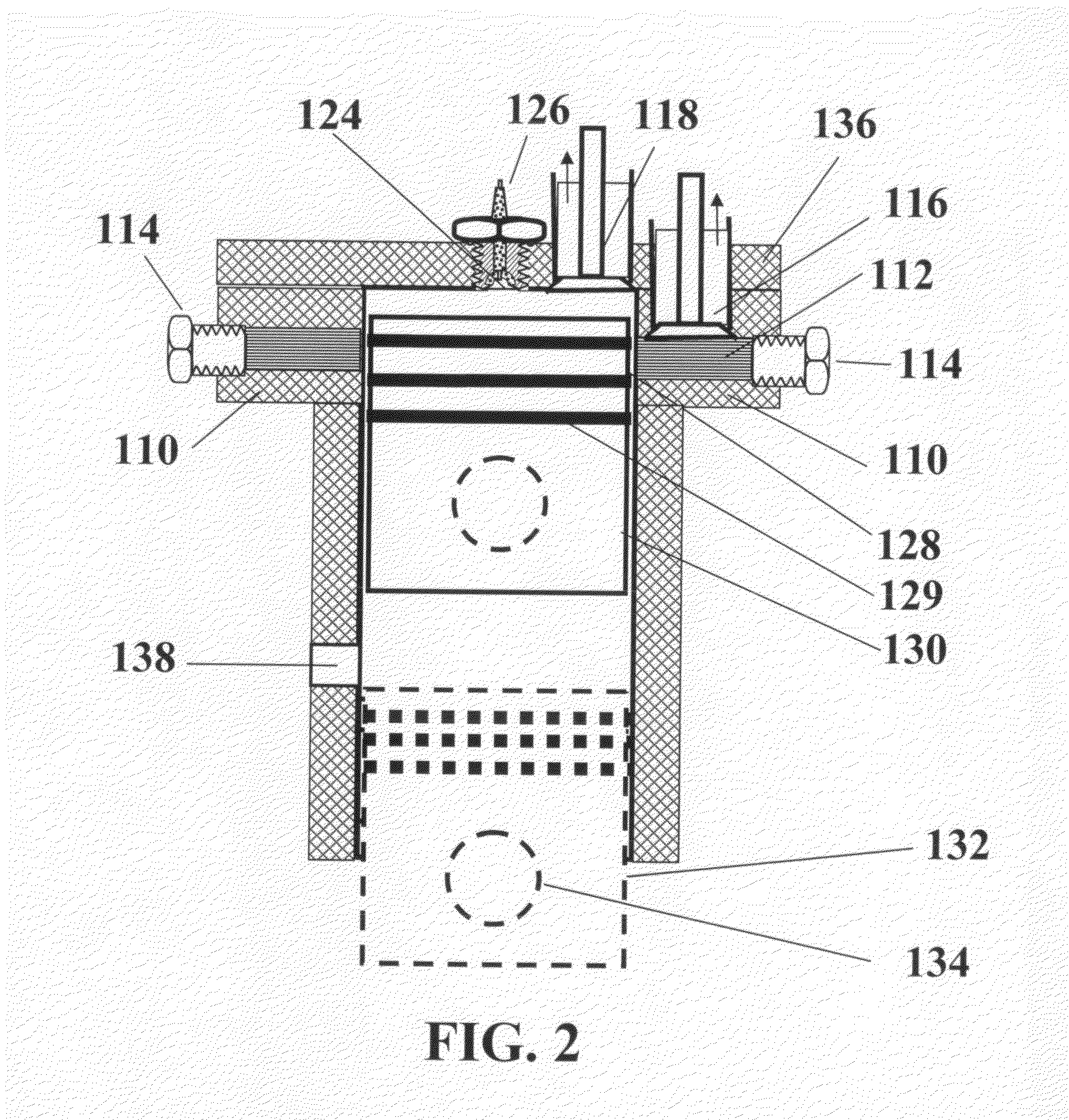Accelerated compression ignition engine for HCCI
a compression ignition and hcci technology, applied in combustion engines, valve arrangements, machines/engines, etc., can solve the problems of low spark energy, low compression temperature, slow combustion of air-fuel mixtures in the otto cycle, etc., to reduce nox formation, high cranking torque, and high torque
- Summary
- Abstract
- Description
- Claims
- Application Information
AI Technical Summary
Benefits of technology
Problems solved by technology
Method used
Image
Examples
Embodiment Construction
[0016]The configurations in the description and drawings in no way are meant to limit the physical configuration of the possible embodiments of internal combustion engines that may operate as described herein.
[0017]A spreadsheet calculation was used to quantify and graph typical compression performance parameters of a 500 cc displacement engine, operating on four different ideal cycles listed below.
1) Otto spark ignition at compression ratio CR=10,
2) Diesel compression ignition at CR=20
3) ACIE-20 / 12 is an abbreviation for: Accelerated Compression Ignition Engine in a spreadsheet with CR=20 at TDC and cylinder wall cavities closing at 12° before TDC.
4) ACIE-20 / 18 an abbreviation for: Engine with Cylinder-Wall-Cavities (CWC) in a spreadsheet with CR=20 at TDC and cylinder wall cavities closing at 18° before TDC.
[0018]A spreadsheet calculation was used to calculate and graph the ideal performance during the compression stroke of four cycles shown in FIG. 3 though FIG. 6. It assumed ope...
PUM
 Login to View More
Login to View More Abstract
Description
Claims
Application Information
 Login to View More
Login to View More - R&D
- Intellectual Property
- Life Sciences
- Materials
- Tech Scout
- Unparalleled Data Quality
- Higher Quality Content
- 60% Fewer Hallucinations
Browse by: Latest US Patents, China's latest patents, Technical Efficacy Thesaurus, Application Domain, Technology Topic, Popular Technical Reports.
© 2025 PatSnap. All rights reserved.Legal|Privacy policy|Modern Slavery Act Transparency Statement|Sitemap|About US| Contact US: help@patsnap.com



